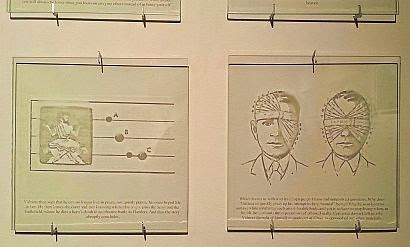What we need is not the Gesamtkunstwerk, alongside and separated from which life flows by, but a synthesis of all the vital impulses spontaneously forming itself into the all-embracing Gesamtwerk (life) which abolishes all isolation, in which all individual accomplishments proceed from a biological necessity and culminate in a universal necessity.
László Moholy-Nagy
Three seemingly disconnected and unrelated art exhibitions are currently on view in New York: “On Kawara: Silence” at the Guggenheim Museum, “In the Studio: Photographs” at Gagosian and “Self: Portrait of Artists in Their Absence" at the National Academy Museum. The exhibitions share instead a strong commonality about making art intersecting with living life: the studio is an experiential place and the artist is a maker of artwork impregnated with existential questioning and awareness of self image. Uncannily these three exhibitions are located a few blocks apart from each other in the Manhattan Upper East Side and seem to complement each other in terms of media: photography, video, sculpture, found objects, newspaper clips, installation.
The most compelling exhibition is probably the On Kawara retrospective: a recording of the conceptual artist's existence as art practice, explored in many different media, from paintings to mail art, artist books. The exhibition starts with work from 1964, produced in different places across the planet during the artist numerous travels and includes several series:
- date paintings from Today;
- postcards from I Got Up;
- telegrams from I Am Still Alive;
- maps from I Went series;
- lists of names from I Met;
- newspaper clips from I Read;
- inventory of paintings from Journals;
- calendars from One Hundred Years and One Million Years.
The three exhibitions made me think of Michel de Certau "The Practice of Everyday Life": a welcomed diversion from many contemporary art exhibitions where often gimmicks camouflage the lack of contents.


.jpg)














.jpg)
.jpg)
.jpg)
.jpg)
.jpg)












.jpg)
.jpg)









.jpg)
.jpg)
.jpg)



